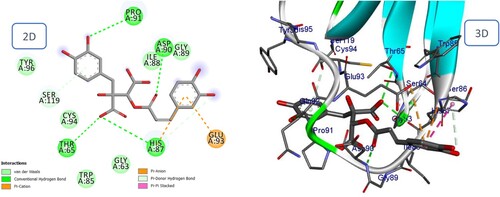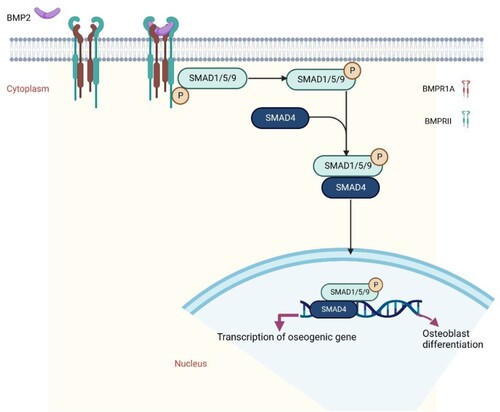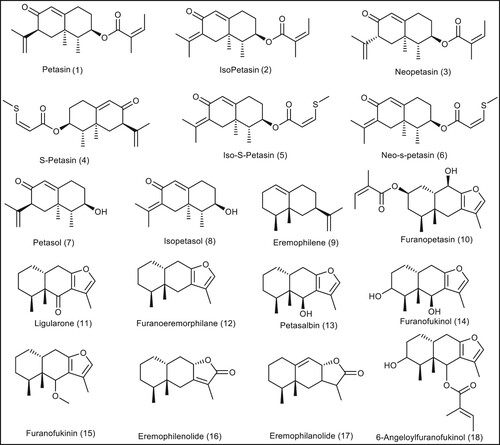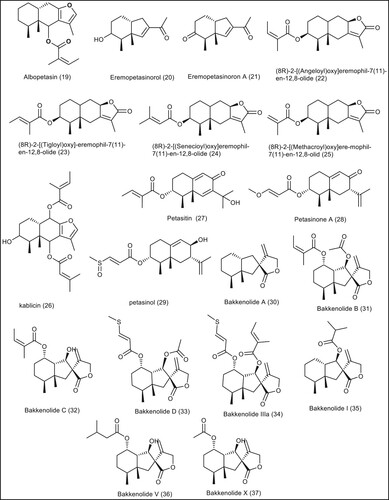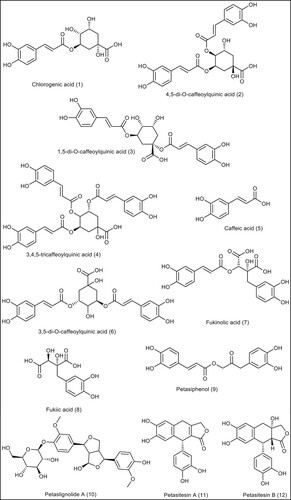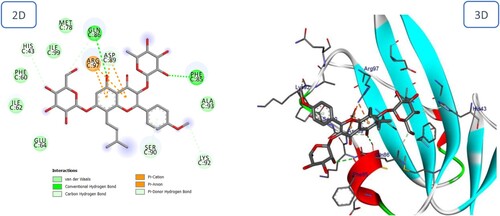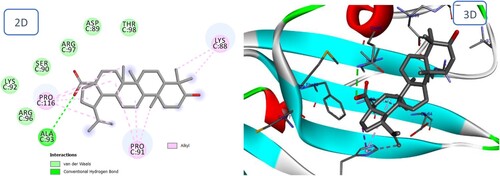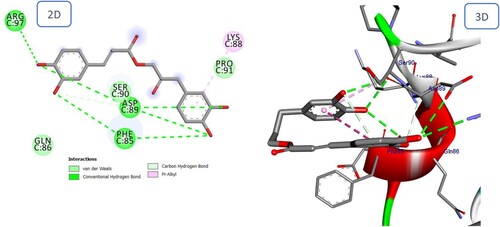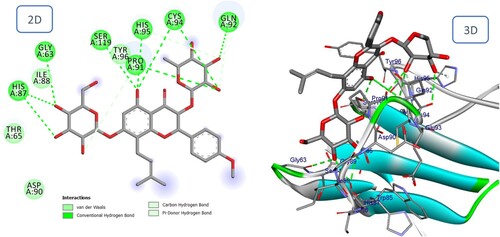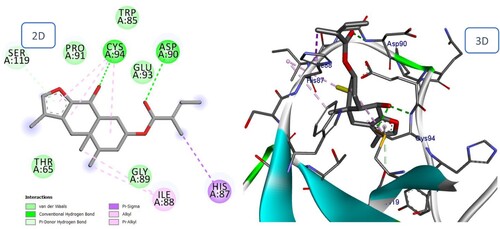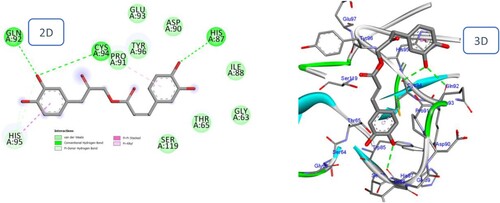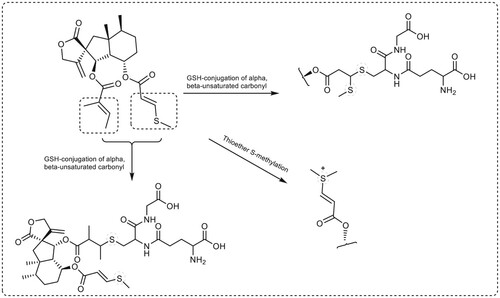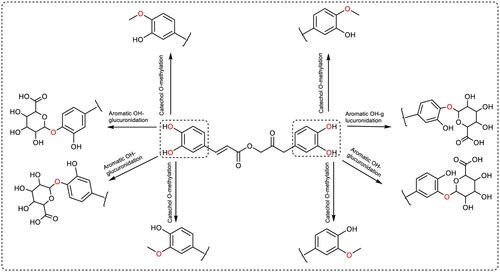Figures & data
Figure 2. Petasites japonicus retrieved from (https://www.gardenfundamentals.com/petasites-japonicus/ last access on 26 Jan 2023).

Table 1. Physicochemical properties of compounds that follow Lipinskís and veber rules.
Table 2. Pharmacokinetic parameters using Swissadme website.
Table 3. Pharmacokinetic properties, mutagenicity, tumorigenicity studies, and solubility value using Pre-ADME, DataWarrior and molsoft wbsites.
Figure 6. Binding of BMP-2 to BMPRII and BMPRIA (Miyazono et al. Citation2010).
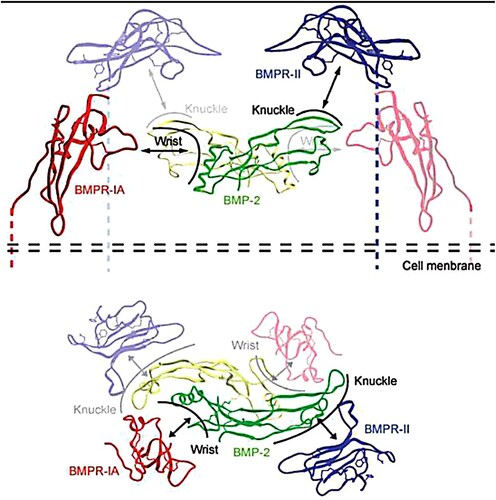
Table 4. The binding energy values (kcal/mol) for all compounds.
Table 5. Binding mode of Icariin, Betulinic acid, 1,5-di-O-caffeoylquinic acid, 3,4,5-tricaffeoylquinic acid, Fukinolic acid and Petasiphenol in the active site of BMPIA receptor.
Table 6. Binding mode and Ki of icariin, betulinic acid, neopetasin, furanopetasin, fukinolic acid, petasiphenol, petasitesin B in active site of BMPII receptor.
Figure 9. 2D and 3D representation of predicted binding mode of Bakkenolide IIIA with BMPIA receptor.
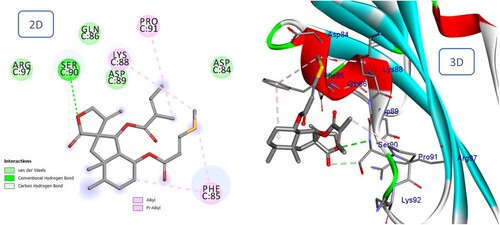
Figure 10. 2D and 3D representation of predicted binding mode of 3,4,5-tricaffeoylquinic acid with BMPIA receptor.
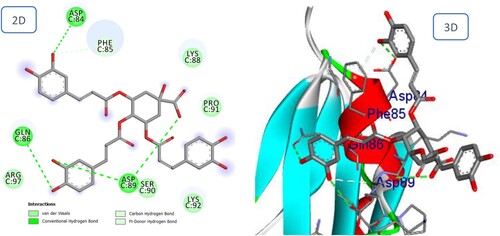
Figure 11. 2D and 3D representation of predicted binding mode of Fukinolic acid with BMPIA receptor.
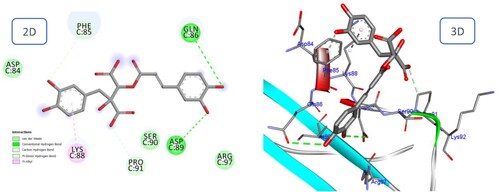
Figure 14. 2D and 3D representation of predicted binding mode of Betulinic acid with BMPII receptor.
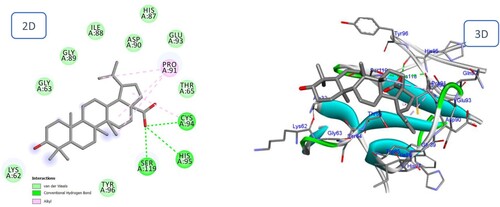
Figure 16. 2D and 3D representation of predicted binding mode of Bakkenolide IIIa with BMPII receptor.
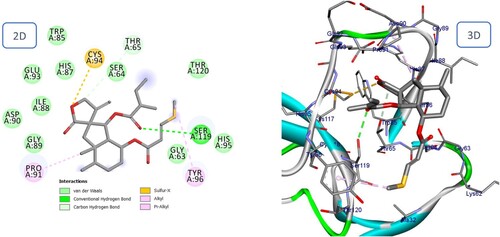
Figure 17. 2D and 3D representation of predicted binding mode of Fukinolic acid with BMPII receptor.
